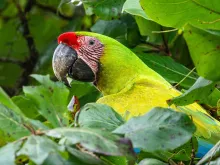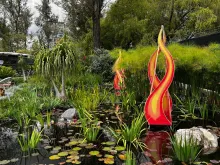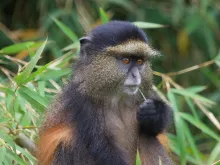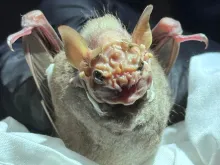Colombia. The name often brings to mind a number of things most travelers do their best to avoid. Cocaine, drug cartels, violent rebel groups — for years these have been what many associate with Colombia. What most people are unaware of is that over the past decade the country has undergone a remarkable transformation.

The Sierra Nevada de Santa Marta | © Ian Segebarth
I first visited Colombia in 2006, at a time in which security was still a big issue. That trip did not exactly go according to plan and ended with me temporarily blind (but that is a story for another time). So it was with some trepidation that I embarked on an expedition to try once again to explore this country and the opportunities it offers for ecotourists. What I experienced during my two weeks in Colombia thoroughly convinced me that it should be at the very top of every list of places to visit in South America. Over the past several years I have traveled to more than 30 countries, including every continent, and after this trip Colombia just might be my new favorite country! Efforts by the Colombian Military and Police to reduce crime, drug trafficking, and rebel activity have been largely successful, with the FARC guerillas mostly confined to a remote region near the southern border with Ecuador. A rapidly expanding economy has led to a growing middle class. New construction can be seen in most cities, and excellent roads can be found throughout much of the country. The Colombian cuisine is excellent, each region having its own unique and delicious dishes. And to top it off, the Colombian people are some of the most friendly and beautiful people you could ever hope to meet!
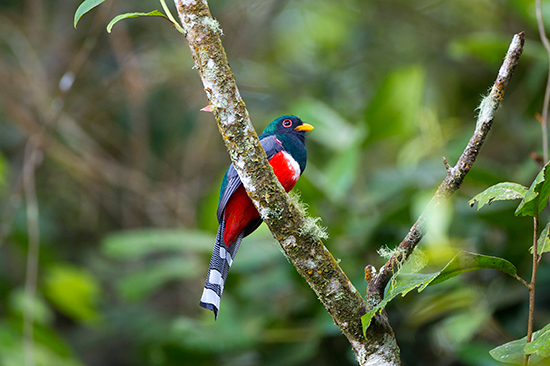
A Collared Trogon (Trogon collaris) at El Dorado Lodge | © Ian Segebarth
My primary objective on this trip was to design a series of new birding tours for Holbrook Travel. With more than 1,900 species of birds found in the region, Colombia has the most diverse avian fauna in the world. The wide array of habitats and unique biogeography of Colombia has led to very high rates of speciation, with many endemics found throughout the country. Unlike most of western South America, where the Andes consist of one single mountain range, the Colombian Andes are split into three distinct ranges; the Eastern, Central, and Western Andes. These ranges are separated by two deep valleys, the Magdalena and Cauca. The two valleys effectively separate the ranges into three different biotic communities, with unique species in each. In addition, there is a fascinating mountain range in the very north of the country called the Sierra Nevada de Santa Marta. With peaks nearly 19,000 feet tall, Santa Marta is the highest coastal mountain range in the world. Completely isolated from any other mountain range, and almost entirely inaccessible by vehicle, the Sierra Nevada de Santa Marta is home to many interesting endemics. All of these factors combine to make Colombia a paradise for birders! I was able to visit three distinct regions for birding during this trip.
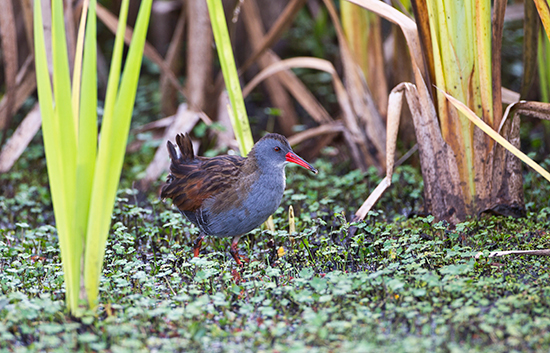
The endangered Bogotá Rail (Rallus semiplumbeus) | © Ian Segebarth
Bogotá, Colombia’s capital city of nearly 8 million people is a great place from which to explore the Eastern Andes. I spent the first few nights of my trip in Bogotá, visiting some of the nearby parks and reserves. One of the highlights for this region was a visit to the Guasca Marshes to look for the endemic Bogotá Rail (Rallus semiplumbeus). With patience, this charismatic but highly endangered bird can be observed darting back and forth between the reeds. At one time the Ubaté-Bogotá plateau contained enormous marshes and swamps, but due to habitat destruction only a few lakes with suitable habitat remain. IUCN currently lists the Bogotá Rail as Endangered, with fewer than 4,000 individuals left in the wild.

Sunset at El Dorado Lodge | © Ian Segebarth
My next stop was Santa Marta and the ProAves Foundation’s El Dorado Lodge. The lodge is located on the San Lorenzo ridge in a 2,000 acre private reserve that borders the National Park. Situated in beautiful mid-elevation montane forest, the lodge is a perfect base for birders to search for the many specialties found in the Sierra Nevada de Santa Marta.

The endemic Bearded Helmetcrest (Oxypogon guerinii) | © Ian Segebarth
My final birding location on this trip was the town of Manizales, located in the Coffee Region of the Central Andes. I spent several days here, using Manizales as a base from which to explore the many parks and reserves in the region. I visited Otún-Quimbaya Flora and Fauna Reserve, Los Nevados National Natural Park, and Rio Blanco Reserve. A few of the many birds I saw in this area include the endangered Cauca Guan (Penelope perspicax), the endemic Bearded Helmetcrest (Oxypogon guerinii), and the elusive Brown-banded, Bicolored, Chestnut-crowned, and Slate-crowned Antpittas (Grallaria milleri, G. rufocinerea, G. ruficapilla, and G. nana).
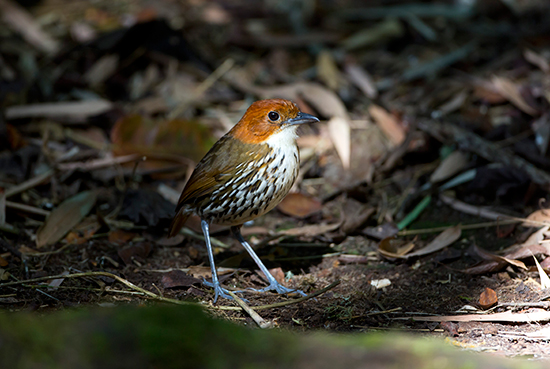
Chestnut-crowned Antpitta (Grallaria ruficapilla) | © Ian Segebarth
Overall, I had an incredible experience in Colombia, saw some amazing wildlife, and really got an appreciation for the countless opportunities available for ecotourism. Be sure to watch for new Holbrook Travel tours to Colombia coming very soon!





